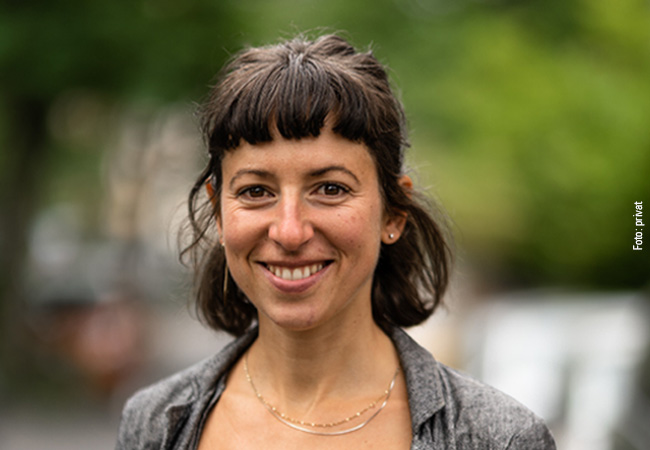
Weather is not the same as climate. Weather phenomena include spring weeks with bright sunshine, scorching midsummer heat, autumn storms and snowy winters, as well as a rainy Easter, thundery Whitsun and a „green“ Christmas. Climate, on the other hand, describes the characteristic course of weather in a given geographical area; in the case of climate change – both man-made as well as that based on natural fluctuation – the long-term mean weather values settle at a different level. Located between „weather“ and „climate“ lies the research subject of Bodo Ahrens, who heads the „Mesoscale Meteorology and Climate“ research group at the Department for Atmospheric and Environmental Sciences at Goethe University’s Faculty of Geosciences / Geography.
The research group’s name already implies that Ahrens not only finds himself in the middle thematically (between weather and climate), but also in terms of the spatial resolution with which he examines entirely different areas of the Earth. „Even if we’re not that interested in global climate events, we’re also not exactly concerned with the prevailing climate in a village square or a backyard,“ Ahrens clarifies. The focus of him and his group lies with weather and climate, whether it’s in Thuringia or central Hesse, in the Rhön Mountains or the Alps, in West Africa or the Himalayas. Sometimes the researchers working with Ahrens analyze measurement data from meteorological stations or radar data, for example, from Germany’s National Meteorological Service. Most of the time, however, they generate the data themselves by running on mainframe computers simulation programs that are based on the equations of their climate models.
Data from the past
Ahrens is naturally interested in the weather and climate of the future – and to this end also draws on weather data from the distant past: „An important test for our models is whether they can reproduce developments that have already manifested themselves,“ he explains. Although he cannot use weather data recorded at a measuring station tens of millions of years ago, using variables such as the growth of mussels, paleoclimatologists can tell how climate and weather developed back then. When creating climate simulations with their models, researchers like Ahrens have to trace the courses of the past. Only once they pass this test, can the models be used to predicting the weather and climate of the future.
To research the current and future weather and climate, however, Ahrens not only examines past phases of the Earth’s history or specific regions that can be found all over the globe: „As part of our simulations, we take a fundamental look at the interactions that exist between the atmosphere and the land or water surface,“ he says, explaining: „On the one hand, energy is exchanged in the form of light and heat radiation.“ Apart from that, he adds, momentum is exchanged through friction: when air masses move over land surfaces and are slowed down and swirled by obstacles such as mountains or buildings, as well as when air flows over a water surface and waves form as a result. „The exchange of substances also plays an important role,“ Ahrens adds. „Carbon dioxide, for instance, can be stored in the soil, on the one hand, and released into the atmosphere, on the other – such as when the Siberian permafrost thaws.“
In his current work, Ahrens takes such processes into account, for example, when he investigates whether „blocking weather situations“ occur more frequently in a changing climate, i.e. whether Germany (or another country) will come under the influence of a high-pressure area that practically does not move one bit for weeks – as was the case in the summer of 2022. This research is part of a project funded by the German states of Hesse, Rhineland-Palatinate, Saxony and Lower Saxony. „In a changing climate, this will lead to increasingly frequent and severe heat waves and droughts,“ he cautions.
Researching together
By now, his research extends beyond the troposphere, i.e. beyond the innermost 8 (at the poles) to 18 (at the equator) kilometers of the Earth’s atmosphere, where actual weather events take place. With financing from the German Research Foundation (Deutsche Forschungsgemeinschaft, DFG), as part of a collaborative research center that brings together other Frankfurt-based research groups as well as scientists from, among others, the universities of Mainz and Darmstadt and the German Aerospace Center (Deutsches Zentrum für Luft- und Raumfahrt, DLR), Ahrens is researching the interactions between the troposphere and the stratosphere above it, and how these are changing as a result of climate change.
Moreover, he is not just involved in a German research network, and his work also goes beyond documenting how climate change is affecting the Earth’s atmosphere: Researchers from Frankfurt and Cologne, as well as from eleven other European countries, including Spain, Austria, Lithuania, Great Britain and Ukraine, have joined forces in the interdisciplinary, EU-funded „DISTENDER“ project, which brings together climate researchers, hydrologists, atmospheric chemists, urban developers, sociologists, economists, IT specialists and others with the aim of finding feasible strategies for climate protection and adaptation to climate change, using six model regions from all over Europe as examples.
Stefanie Hense













